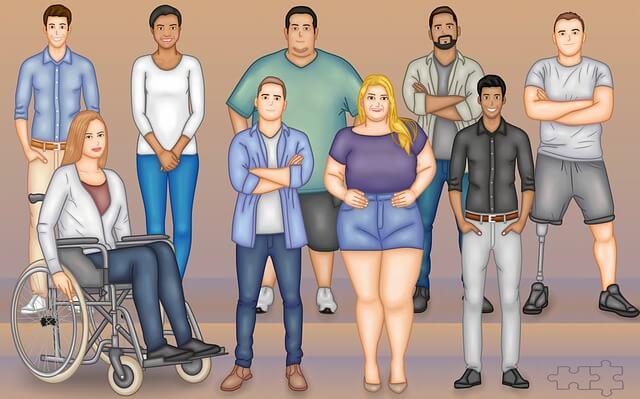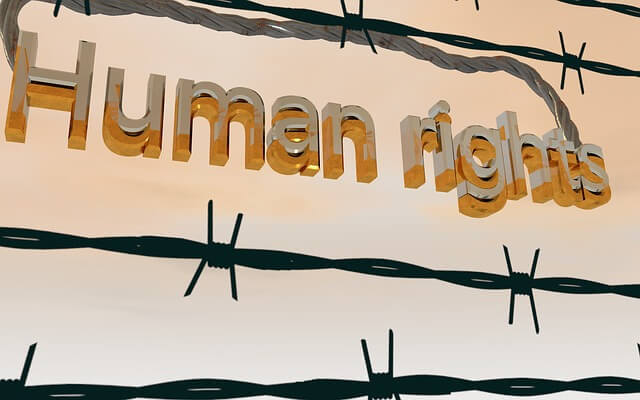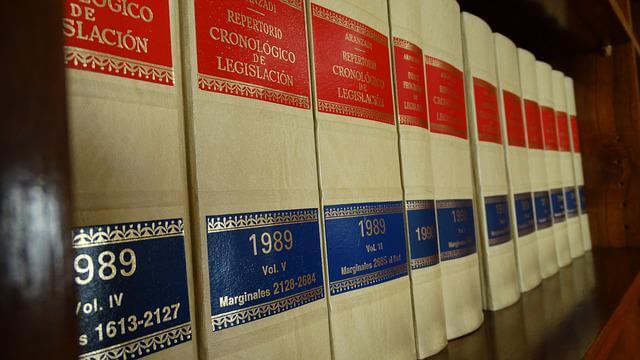Equality Act
المقررات الدراسية موسومة بـ "Equality Act"
Equality and Diversity
Learn about equality and diversity in health and care. This course is ideal for intermediate learners.
Introduction
The health and social care sector recognises the need to treat everyone equally, and therefore equality, diversity and rights affect all those working in the sector as well as those who use health and social care services.It is important that these terms, equality, diversity and rights, are at the very core of everything that is done.
Equality, diversity and rights ensure that everyone is treated the same, regardless of the following:· Gender
· Sexuality
· Ethnicity
· Language
· Race
· Age
· Sexual orientation
· Background
· Beliefs
· Disability
· Education
· Skin colour
Equality, diversity and rights will have different effects on your career and an impact on the people you care for as they mean different things. For example:
Equality
Equality looks at how everyone should be treated in the same way. This means that every individual should have the same rights, status or opportunities.
Laws
Laws have been put in place to ensure that this happens and organisations have to write and adhere to equality policies (guidelines that tell an organisation what to do in a particular situation) which outlines what they must do and how they should do this, so that everyone is treated equally.
You will learn
- Introduction to Equality, Diversity and Rights in Health & Social Care
- Groups, Stereotyping and Labelling
- Promoting Equality & Diversity rights in a Health & Social care setting
- Protected Characteristics
- Equality - Rights in the Social Care setting
Human Rights
Introduction
Human rights are rights we have simply because we exist as human beings - they are not granted by any state. These universal rights are inherent to us all, regardless of nationality, sex, national or ethnic origin, color, religion, language, or any other status. This means that we are all equally entitled to our human rights. This principle, as first emphasized in the UDHR - Universal Declaration of Human Rights (UDHR) - is repeated in many international human rights conventions, declarations, and resolutions.Human rights are the basic rights we all have simply because we are human. A right is a legal entitlement
to something. There are fundamental rights and freedoms that everyone in the UK is entitled to.
Identify what you think counts as a “right” from the list below:
· Money
· Education
· Employment
· Privacy
· Car
· Marriage
· Phone
· Vote
· House
· Life
· Freedom
Discrimination
Learn about discrimination, protected characteristics and exceptions. This course is ideal for intermediate learners.
Introduction
Discrimination is treating a person, or particular group of people, differently from the way in which you treat other people, because of a particular characteristic such as skin colour, gender and race. It is against the law in the UK to discriminate against anyone based on nine ‘protected characteristics’.You are legally protected from discrimination by the Equality Act 2010.
You are also protected from discrimination if:
• You are associated with someone who has a protected characteristic, e.g. a family member or friend
• You have complained about discrimination or supported someone who has
You will learn
- What is discrimination?
- Protected characteristics
- Types of discrimination
- Exceptions
Codes of Practice, Values and Standards in Public Services
Learn about stakeholders and codes of practice for public services. This course is ideal for intermediate learners.
Introduction
• They provide an explanation of the Equality Act and how it should be applied to everyday situations for employees, employers, and organisations
• They provide advice for those who need a technical and precise understanding of the law and its impact (particularly lawyers as the Codes are complicated)
• They assist those who need to understand and enforce the law (courts and tribunals)
• They assist those who need to apply the law while advising a client (lawyers and employers)
• They apply throughout England, Scotland and Wales.
A stakeholder is someone with an interest in a business, or in this case the Equality Act, and are usually people who are affected by the legislation.
The stakeholders that were involved in the Equality Act Codes of Practice post consultation report for the period of 2010 were:
• Stakeholders for each of the potential characteristics
• Stakeholders from each key sector (such as education, health)
• Legal experts (such as employment law, government, trade unions)
To discuss the initial drafts of an Equality Act, different groups of people are invited to meetings or consultations. This is where issues may be raised by the stakeholders.
Some of the issues from the 2010 period included:
• Use of language in the Employment Code, for example the term ‘employee’ as opposed to ‘worker’
• Audience and accessibility of the Codes
• For the examples used in the Codes, striking the right balance between reflecting discrimination in a realistic way and avoiding offensive stereotypes
The language and structure of the document may be altered or changed. However, complex issues may need more time to be answered in future publications.
You will learn
- What the codes of practice are
- Stakeholders and what they do
- Seven principles of public life
- The importance of the principles
The Cost of Public Services
Learn how much public services cost and how charities contribute to them. This course is ideal for intermediate learners.
Introduction
The top three spending categories include:· Social protection
· Health
· Education
The following categories explain where the Government spends money:
Social protection costs £222 billion (the figure is for training purposes only)
The most money is currently spent on social protection (or welfare) which helps those who are disadvantaged, including:
o Pensions
o Disability benefits, such as cars, parking and prescriptions
o Housing, such as accommodation and upkeep
o Unemployment benefits
o Family benefits, for instance tax credits
Social security spending in UK
Over 55% of social security expenditure goes to pensioners.The government is forecast to spend £121 billion on pensioners and £94 billion on working age people and children this year. In 2017 to 2018 £121 billion was spent on pensioners and £96 billion was spent on working age people and children.
You will learn
- How much public services cost the government
- The top three spending categories
- How charities contribute to public services
Equal Opportunities
Learn about the cost of implementing or not implementing equal opportunities measures. This course is ideal for intermediate learners.
Introduction
Creating and developing equal opportunities creates many benefits for society, public services and businesses. However, with the application of the Equality Act 2010 and so that equal opportunities can be achieved, it comes with a cost. Although this should far outweigh the cost involved with not adhering to the act.The cost for businesses: Possible costs of adhering to the Equality Act 2010 and equal opportunities for businesses employing a wide diversity of staff:
Costs to employers includes:
• Simplification of application process
• Learning and understanding of different cultures (clothing, special days, religious needs)
• Providing areas for rest or religious activities
• Food or methods of preparation (If canteen area is provided)
You will learn
- The cost of implementing equal opportunities
- The cost of not implementing equal opportunities
- Equal opportunity measures
Public Services and Legislation
Learn about the legislation surrounding the public sector and equality duty. This course is ideal for intermediate learners.
Introduction
All public services have to comply with the Equality Act 2010 and this states that they must also comply with the public sector equality duty. The equality duty ensures that public services think about how they deliver their services and how this will impact on those who are disadvantaged or within the protected characteristics group.
As with discrimination exceptions, there are situations where public services do not need to comply with these duties. These include the following areas:
Judicial Events – The courts do not need to think about the equality duty when making decisions or when and how they conduct the proceedings.
Age in education or children’s home – Schools do not need to think about how to develop good relationships between pupils of different ages. However they need to consider this between pupils of different religions.
Immigration - When involved in immigration proceedings, public services would not need to think about the advance equality of opportunity (treating one group more favourably than another because of their disadvantage) to those in the following protected groups:
- · Age
- · Religion
- · Race
You will learn
- Public sector equality duty exceptions
- Types of legislation under the equality duty
- Policy and decision making processes
Public Services and Equality
Learn about equality and how it affects people and public services. This course is ideal for intermediate learners.
Introduction
Equality is based on the understanding that everyone should be treated equally, so that they have the same opportunities as each other regardless of, for example, their age, sex, sexuality, disability or race.People treated unequally due to these differences are being discriminated against, which is illegal.
We are protected from discrimination through the implementation of the Equality Act 2010.
Equality Act 2010.
below some of the nine pieces of legislation were merged to create the Equality Act 2010.
EQUAL PAY ACT 1970: Stops any favourable or unfavourable treatment of pay, or any other conditions, within employment between men and women.
RACE RELATIONS ACT 1976: The protection against discrimination relating to a male or female’s race, colour, ethnic or national background in education and employment and during the process of buying goods or services.
EMPLOYMENT EQUALITY (RELIGION or BELIEF) REGULATIONS 2003: Used to protect people
from being discriminated against due to their religion or belief, or non-religion/belief
within employment.
EMPLOYMENT EQUALITY (SEXUAL ORIENTATION) REGULATIONS 2003: The protection against discrimination due to expected or known sexual orientation within employment, which also includes discrimination against religion, belief and age.
EMPLOYMENT EQUALITY (AGE) REGULATIONS 2006: The protection against discrimination on the grounds of age within employment. Employees may work after the national retirement age.
You will learn
- Equality
- What is equality
- How equality affects us and the public services
Individual Rights Dignity & NHS
Learn more about dignity and rights when using public services. This course is ideal for intermediate learners.
Introduction
In life we need to use the Public Services many times for different reasons. It is important that when we need these services that they are high quality services.For example, if you were to call the Paramedics in an emergency and they did not turn up until the next day this could be very dangerous and would be an example of poor quality service.
Another example could be if you called the fire service and they did not turn up with the correct equipment with them, then lives could be in danger.
You will learn
- Public services users rights
- Your right to consent to treatment when using the NHS
- Why it is important to have your dignity maintained when using public services










